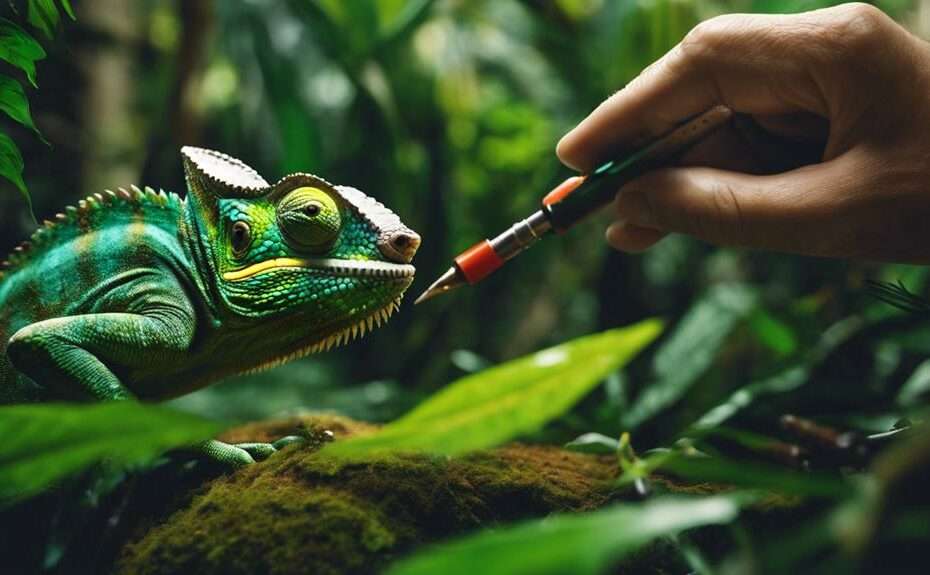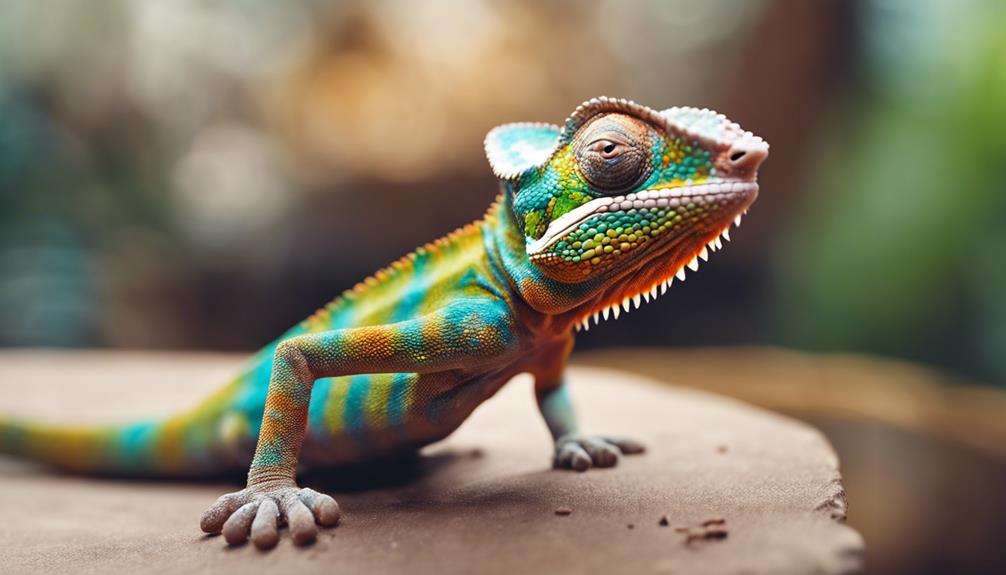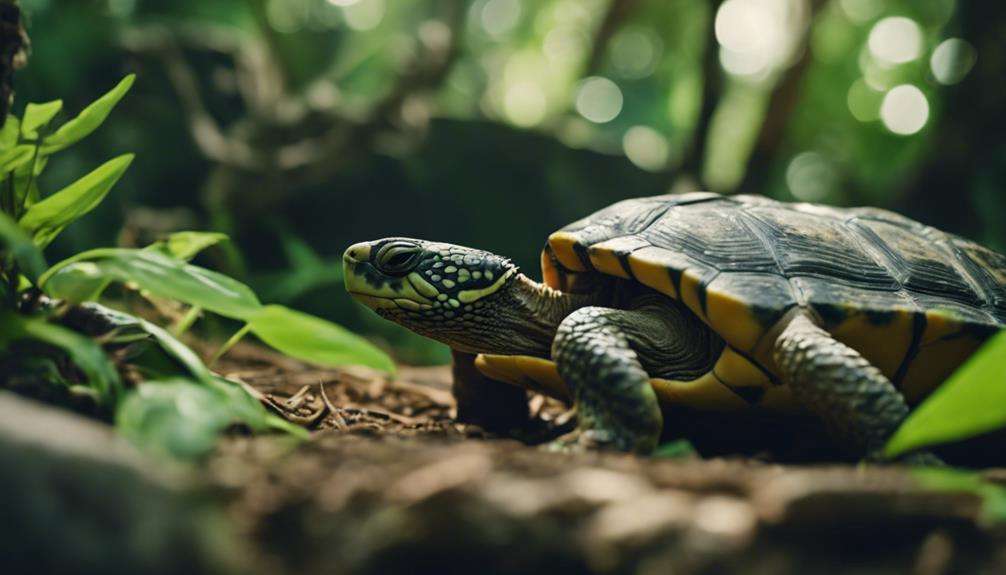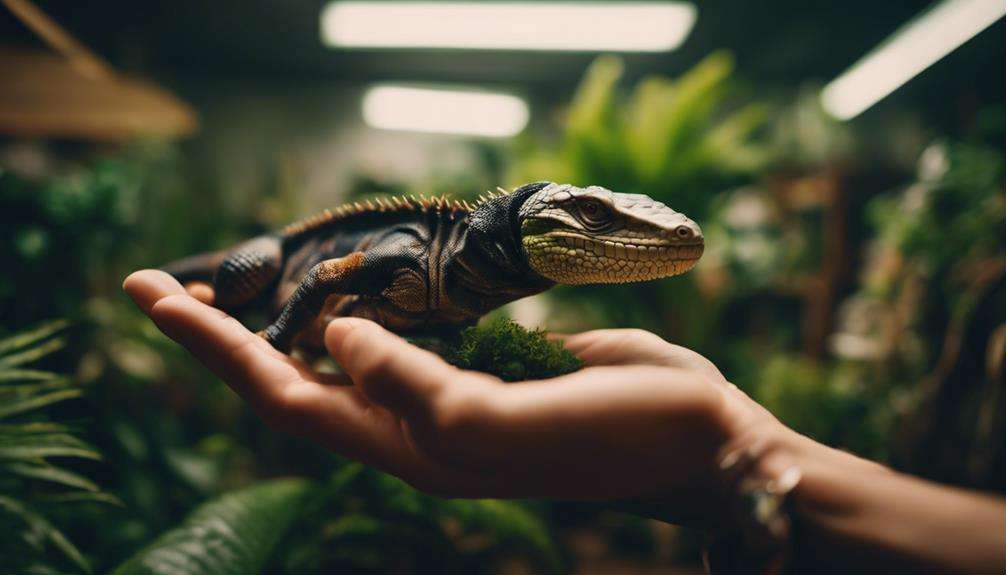To safeguard endangered reptiles, you must focus on habitat preservation, provide proper nutrition, and ensure veterinary care. These three essential caring tips can significantly impact the well-being of these vulnerable creatures. By incorporating these practices into your conservation efforts, you will play a vital role in preserving endangered reptiles' populations.
Let's delve deeper into each aspect to understand how your actions can make a difference in their survival.
Key Takeaways
- Protect habitats and support conservation efforts.
- Provide a diverse and balanced diet with essential supplements.
- Ensure regular veterinary care and specialized treatment.
- Engage in conservation to safeguard endangered reptile populations.
Habitat Preservation
Preserving the natural habitats of endangered reptiles is a fundamental necessity for their survival and well-being. Ensuring the protection of State Wildlife areas where these reptiles reside is crucial. These habitats often contain diverse native vegetation that provides food, shelter, and breeding sites for endangered reptiles. By safeguarding these State Wildlife areas and the native vegetation within them, we can create stable environments where endangered reptiles can thrive.
Conserving and restoring these habitats is essential to combat the threat of habitat destruction and fragmentation facing endangered reptile species. Initiatives aimed at restoring degraded habitats and establishing wildlife corridors can help reconnect fragmented habitats, allowing endangered reptiles to move freely and access necessary resources. Supporting land conservation efforts that focus on preserving key habitats such as forests, wetlands, and grasslands is vital for the long-term survival of endangered reptiles. By prioritizing habitat preservation, we can contribute significantly to the well-being and persistence of these vulnerable species.
Proper Nutrition
To ensure the optimal health and development of endangered reptiles, providing a balanced diet rich in calcium and vitamins is essential. Endangered and threatened reptiles require a diverse diet to meet their nutritional needs adequately.
Offer a variety of prey items such as insects, vegetables, and fruits to ensure they receive essential nutrients for their growth and overall well-being. Consulting with a reptile veterinarian is crucial to tailor a feeding plan that aligns with the specific dietary requirements of the species in question.
Supplementing their diet with calcium and vitamin D3 is vital to prevent metabolic bone disease, a prevalent health issue in captive reptiles. Regularly monitor their eating habits and adjust their diet as necessary to maintain optimal health.
Veterinary Care
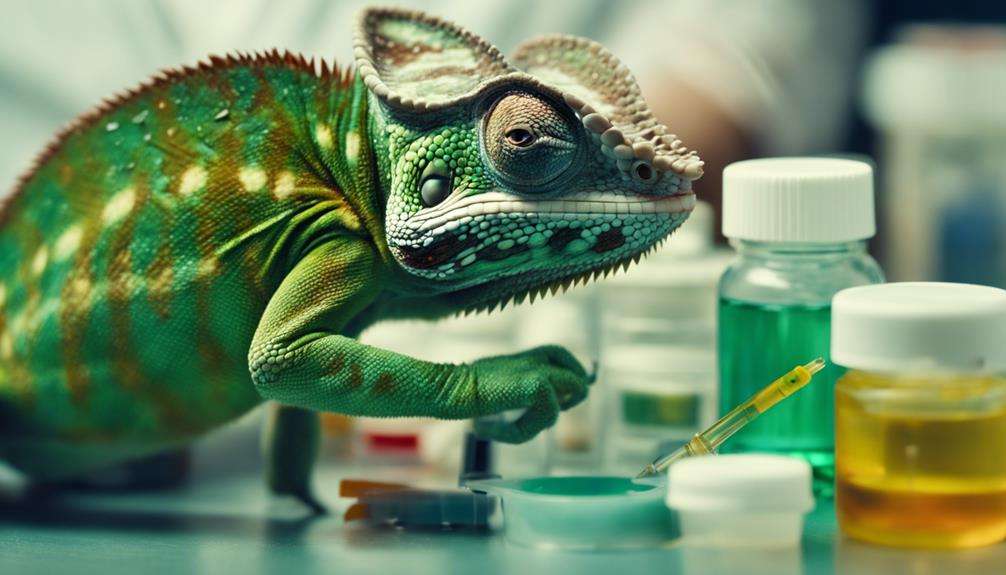
Regular veterinary check-ups play a crucial role in monitoring the health and well-being of endangered reptiles, ensuring early detection and treatment of any potential threats to their survival. For native species facing endangerment, specialized veterinarians with experience in exotic animal care are essential for providing appropriate medical attention. These professionals conduct diagnostic testing, treat infections, and perform nutritional assessments to guarantee the overall welfare of the reptiles.
Detecting and addressing diseases or injuries promptly is vital in the conservation efforts aimed at preserving endangered reptile species. Through proper veterinary care, conservationists can mitigate risks and enhance the chances of survival for these vulnerable creatures. By partnering with knowledgeable veterinarians, conservation initiatives can implement effective health management strategies that contribute significantly to the protection and sustainability of native reptile populations. Veterinary care stands as a cornerstone in safeguarding endangered reptiles and ensuring their continued existence in the wild.
Frequently Asked Questions
How Can We Save Endangered Reptiles?
To save endangered reptiles, focus on habitat restoration to ensure their survival. Engage in conservation efforts by supporting captive breeding programs. Educate others on the importance of preserving ecosystems. Your actions can make a significant impact.
How Can We Protect the Endangered Animals?
To protect endangered animals, you must engage in conservation efforts like habitat restoration. Educate through public awareness campaigns and outreach. By supporting these practices, you contribute to the survival of precious species and ensure a sustainable future.
What Are Three Ways to Save Endangered Species Briefly Explain?
To save endangered species, support conservation efforts through donations and advocacy. Promote habitat restoration by volunteering in restoration projects. Educate others about biodiversity. Your actions can make a difference in preserving our planet's fragile ecosystems.
What Can You Do to Help Reptiles?
To help reptiles, support habitat restoration and education programs. Get involved in conservation efforts and community initiatives. Spread awareness about the importance of preserving endangered species. Your actions can make a significant impact on reptile populations.
Conclusion
As you tread lightly on the path of conservation, remember that each action taken is a stepping stone towards safeguarding the delicate balance of nature.
Like a guardian of the reptilian realm, your efforts to preserve endangered species are akin to a shield against the encroaching threats of extinction.
With every gesture of care and concern, you become a beacon of hope for these majestic creatures, ensuring their survival for generations to come.
The future of endangered reptiles rests in your hands.
